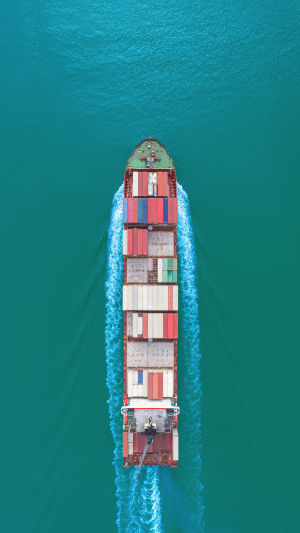Modern transport ships, despite their many types and different structures, are composed of two parts: hull (including superstructure) and power plant (see Ship Power Plant).
And they are equipped with various outfitting equipment and systems.
The hull and its superstructure are the main body of the transport ship, providing space for loading passengers, crew, as well as cargo, power plant and materials such as oil and water.
The superstructure is the building above the upper deck.
The superstructure of cargo ship is mainly used for driving and maneuvering and crew life.
In the past, typical general cargo ships were mostly medium-sized, and their superstructures were located in the bow, stern and middle of the ship, which were called bow building, stern building and bridge building.
This kind of ship was called three-island type ship.
The bridge building is the center of work and life of the whole ship, and the uppermost part is the steering deck, chart room, telegraph room, etc.
The part below the steering deck is the place for crew to live, rest and play.
The power plant includes the main engine which provides propulsion power for the ship, the generator set which provides power and lighting for the whole ship, and various other auxiliary engines and equipments.
The main engine is the heart of the transport ship.
Most of the main engines of modern transport ships are low-speed or medium-speed diesel engines, which drive the propellers mounted on the stern directly or after deceleration to propel the ships forward.
In addition to diesel engine, a few ships also adopt steam engine, steam turbine, gas turbine and even nuclear power plant.
Diesel engine shipboard generator sets are 2 to 3 diesel generator sets, generally using 400 volts three-phase alternating current, the frequency is 50 Hz or 60 Hz.
The ship is also equipped with sub boilers or exhaust gas boilers to provide steam and heat source for the whole ship.
Various auxiliary engines and equipment mainly include air compressors, various oil pumps, water pumps, as well as heat exchangers, pipelines, oil and water cabinets, etc.
Bulk carrier is the abbreviation of bulk carrier, which is specially used to transport unbunded cargoes, such as coal, ore, timber, livestock, grains, etc.
Ships that transport bulk dry bulk cargoes such as grain, coal, ore, salt, cement, etc.
In bulk can be called dry bulk carriers, or bulk carriers for short.
Because the cargoes of dry bulk ships are single, do not need to be packed into bundles, bales and boxes for loading and transportation.
They are not afraid of extrusion and are easy to load and unload, so they are all single-deck ships.
The total load capacity is above 50,000 tons, and generally not loaded with lifting equipment.
The weight of the ship is so big, why can float on the water?
The main reason is that the ship is large enough to generate enough buoyancy to offset the sinking force, so it can float on the water.
Despite this, the ship still has to conform to the physical characteristics and is not simply a steel plate component.
For example, the ship's hull is reasonably constructed.
The top large and bottom small structure to maintain stability and prevent capsizing, reasonable draft line, and empty compartments to increase buoyancy all ensure the ship to float steadily on the surface of the water.





